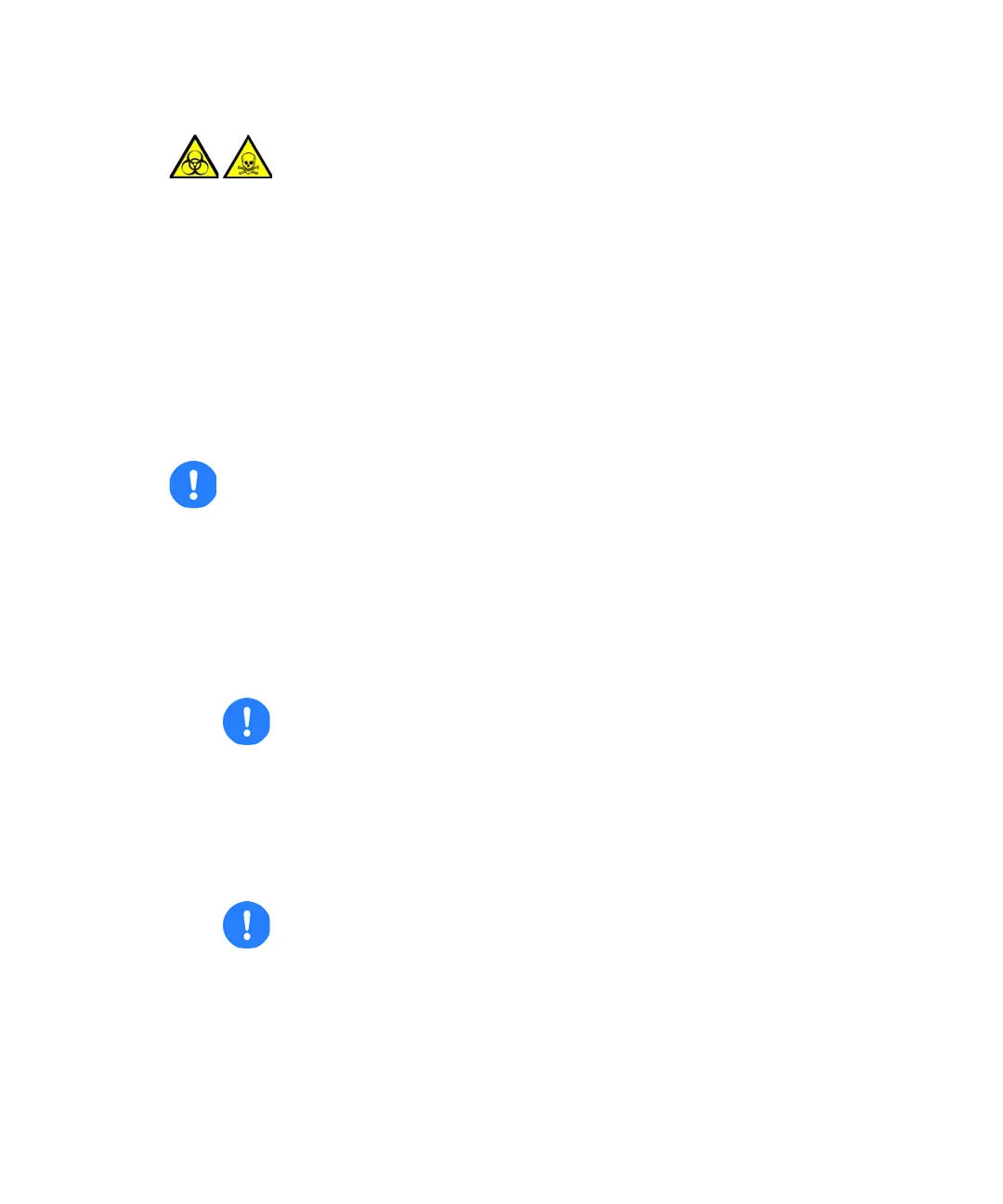Connecting the nitrogen exhaust lineB-21
To connect the nitrogen exhaust line
1. Locate the exhaust trap bottle in an accessible area below the
instrument. See the figure “Exhaust trap bottle” on page B-22.
2. Cut a length of 12-mm tubing long enough to connect the instrument to
the exhaust trap bottle.
3. Connect one end of the tubing to the exhaust port on the rear panel.
Connect the other end to one of two ports on the exhaust trap bottle.
4. Cut a second length of 10-mm tubing long enough to connect the exhaust
trap bottle to the exhaust vent.
Warning:
• LC solvents and analytes can be carried in the nitrogen
exhaust, which must be vented via the nitrogen exhaust trap
bottle and laboratory exhaust system. The laboratory exhaust
system must provide a minimum vacuum of 0.20 kPa (2 mbar,
0.03 psi) below atmospheric pressure (negative pressure).
• The exhaust connections can be contaminated with
biohazardous and/or toxic materials. Always wear
chemical-resistant, powder-free gloves when performing this
procedure.
• To avoid the buildup of hazardous gases, do not place the
nitrogen exhaust trap bottle in an enclosed cabinet.
Caution: The instrument requires two separate exhaust systems: one
for nitrogen, the other for the roughing pump. Vent them to
atmosphere through separate exhaust lines. Oil mist can seriously
damage the instrument if the nitrogen exhaust line connects with the
roughing pump exhaust line. Your warranty does not cover damage
caused by routing exhaust lines incorrectly.
Caution: To avoid gas leaks, use the sharp knife to cut the PTFE
tubing squarely (that is, perpendicular to its horizontal axis).
Caution: To avoid gas leaks, use the sharp knife to cut the PTFE
tubing squarely (that is, perpendicular to its horizontal axis).
